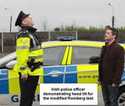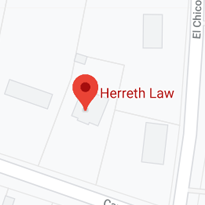 Many times, intoxication, or the lack thereof, is the only real issue in a DWI matter. But sometimes, the “driving” element is equally as controversial.
Many times, intoxication, or the lack thereof, is the only real issue in a DWI matter. But sometimes, the “driving” element is equally as controversial.
At trial, Parker County prosecutors must establish every element of the offense beyond a reasonable doubt. That’s the highest standard of proof in the law. So, a Weatherford criminal defense attorney does not have to “prove” anything. Defense lawyers only need to create credible doubt as to one element.
Driving/Operating a Vehicle
Section 49.04 of the Texas Penal Code really prohibits OWI, or Operating a Vehicle while Intoxicated. Courts have consistently interpreted operating/driving extremely broadly. So, there are basically four kinds of DWIs in this area.
Traffic stops trigger the vast majority of DWI cases in Parker County. Generally, the officer sees the defendant commit a traffic violation, the officer approaches the vehicle, the officer sees signs of intoxication, and it is off to the races. There are some variations, but the story is basically the same.
According to Texas law, defendants are operating vehicles if the key is in or near the ignition and the vehicle is driveable. So, if officers see people who are literally asleep at the wheel in parked cars, these people could be charged with DWI, and those charges will probably hold up in court.
Next, there is the semi-operating case. For example, the keys could be in the glove compartment or the vehicle might have a nearly-dead battery. It is harder to establish the “driving” element in these situations, even given the expansive definition of operating a vehicle.
Finally, in a handful of cases, the defendant is intoxicated behind the wheel, but the car is not driveable for one reason or another. These defendants pose no risk to public safety, so DWI charges will probably not hold up in court.
DWI Collision Cases
These cases present a similar problem for prosecutors. Remember they have the burden of proof on every element of the offense.
Typically, by the time emergency responders arrive at “fender-bender” accident scenes, the drivers have exited their vehicles. Based on their observations, these responders can testify that the defendant was intoxicated, but they cannot testify that s/he drove or operated the vehicle.
Prosecutors have several options in these cases, and none of them are particularly good. The state could reduce the charges to PI (public intoxication), but typically, such reductions are politically unacceptable.
Alternatively, prosecutors could subpoena the other driver who probably saw the defendant get out of the car. However, relying on civilian witnesses is time consuming. Since these people are not professional witnesses, prosecutors must work with them to prepare them. That’s more work than most prosecutors want to do.
Finally, prosecutors could look for any statements the defendant made about driving the car. It may be possible to admit these statements under an exception to the hearsay rule. If it is available, prosecutors almost always take this third path.
The “driving” element in a DWI can be hard to prove in court. For a free consultation with an experienced criminal defense attorney in Weatherford, contact Herreth Law. After-hours visits are available.

